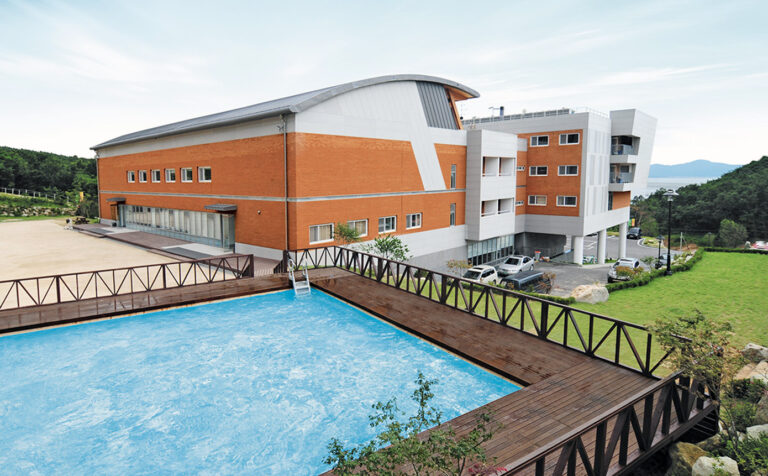Until 1991, youth hostels were facilities used for lodging properties under the Tourism Promotion Act. However, they were reclassified as training facilities under the ‘Youth Basic Act’ enacted in 1993, and with the implementation of the ‘Youth Activity Promotion Act’ in 2005, they were integrated into youth training facilities.
The Youth Activity Promotion Act mandates that the state and local governments establish and implement policies for youth activity facilities, youth activity programs, and youth leaders to enable youth to participate autonomously and voluntarily in various youth activities. Youth activity facilities are broadly categorized into youth training facilities and youth utilization facilities. Youth training centers, youth training centers, youth culture houses, youth specialty facilities, youth campsites, and youth hostels fall under youth training facilities. Among these, youth training centers, youth campsites, and youth hostels provide accommodations for overnight youth training activities.
Annex 3 of the ‘Enforcement Regulation of Youth Activity Promotion Act’ sets out the following additional facility standards for youth hostels, in addition to the common standards applicable to training facilities:
- Guestrooms
- Each room should accommodate no more than 10 people, and the total number of double or smaller rooms should not exceed 40% of the total accommodation capacity.
- Family rooms may be provided for families accompanying youth. In this case, the total capacity of the family rooms should not exceed 30% of the total accommodation capacity.
- The dormitory room should provide at least 2.4 square meters per person. However, for middle school or elementary school students, the total dormitory capacity can be increased by 10% (for middle school students) or 20% (for elementary school students).
- Must have good natural lighting and ventilation and should not be located in basements.
- If family rooms are to be installed, they can include divided bedrooms, a living room, and a kitchen. If a living room is included, 30% of the living room area can be considered as part of the dormitory room area.
- If dormitories are dispersed in small units, accommodation for youth leaders should be placed near the youth dormitories.
- Each floor with dormitory rooms must have shared toilets, showers, and washrooms (if dormitories are dispersed, these facilities must be provided at close distances). However, if all dormitory rooms on the floor have their own toilets, showers, and washrooms, additional facilities are not required.
- Must have a communal laundry room. However, if the washroom and shower room can also serve as a laundry room, a separate laundry room is not required.
- Must have heating facilities. However, if individual dormitory rooms have heating facilities, a carbon monoxide detector inspected and approved according to the ‘Act on the Prevention and Management of Fire and Safety’ must be installed in each room.
- Conversation and Information Room
- These rooms should be designed to provide travel and cultural information and to serve as meeting spaces.
- Self-Catering Kitchen
- Cooking facilities should be provided at a ratio of one set per 50 accommodation capacity. However, the total number should not exceed five sets.
- The structure should ensure good ventilation and be equipped with fire prevention equipment.
- It should have water supply, drainage, and waste disposal facilities.
- Youth hostels must have cooking facilities (gas or electric stoves, sinks), dining tables, chairs, and storage for individual cooking utensils and supplies.
- If installed outdoors, the structure should be weatherproof, and the location should be convenient.
- Rest Area
- At least one leader’s room must be installed.
- A space for users to rest, equipped with chairs and tables.
- If chairs and tables are placed in shared areas for rest purposes, it can be considered a rest area (limited to cases where the individual standard does not specify a rest area).
- Leader’s Room
- At least one leader’s room must be installed.
- An indoor space used by youth leaders for preparing youth training activities, equipped with necessary equipment such as chairs and tables.
- Heating Facilities
- Must have heating facilities.
- Emergency Equipment
- Must be equipped with emergency lighting or equipment.
- An emergency water supply facility must be installed.
- Other facilities: broadcasting equipment, infirmary, and storage facilities.
- Broadcasting equipment: Facilities for making announcements within the training facility, with the main equipment installed in a separate broadcasting room or adjacent to the management office.
- Infirmary
- Must be equipped with a medicine cabinet, bed, bedding, and other necessary items for first aid and emergency treatment of sick or injured individuals.
- Can be installed adjacent to the management office or office (limited to cases where the individual standard does not specify an infirmary).
- Storage Facilities: Must have storage facilities or lockers.
- Accommodation Capacity: This refers to the appropriate number of people who can be accommodated simultaneously in the guestrooms.


